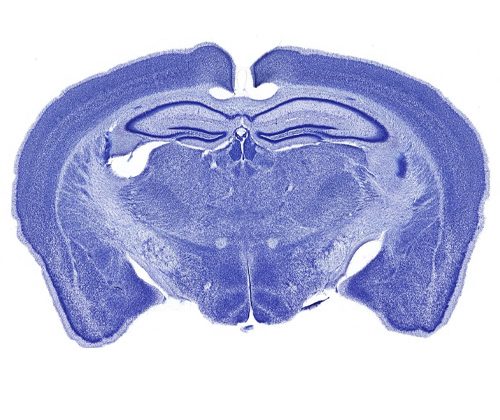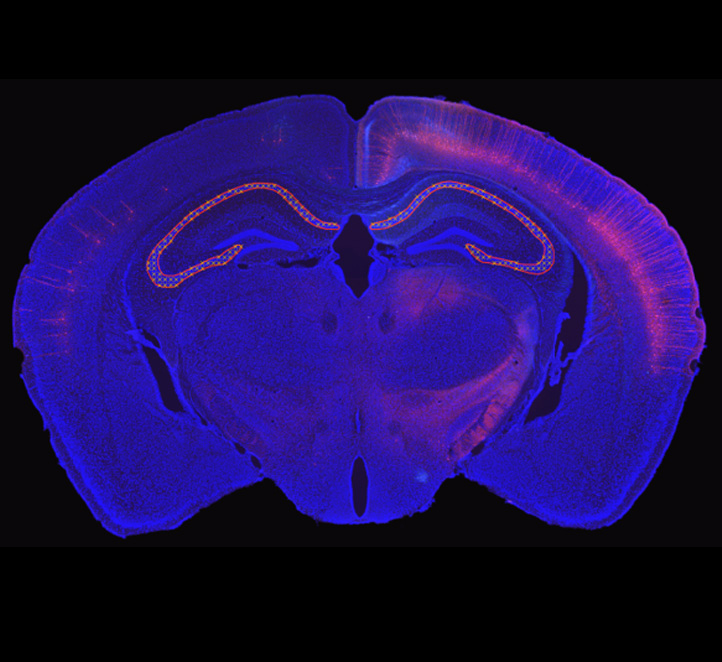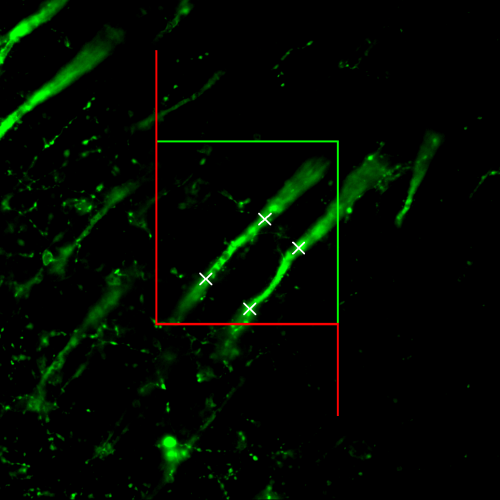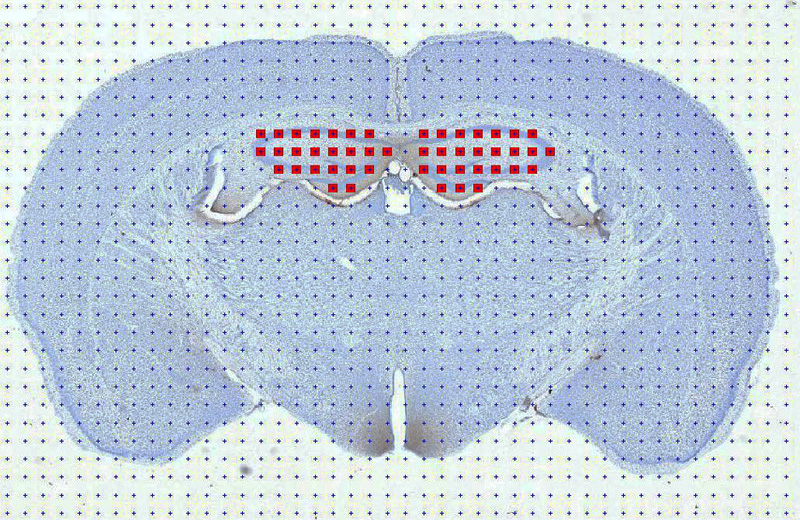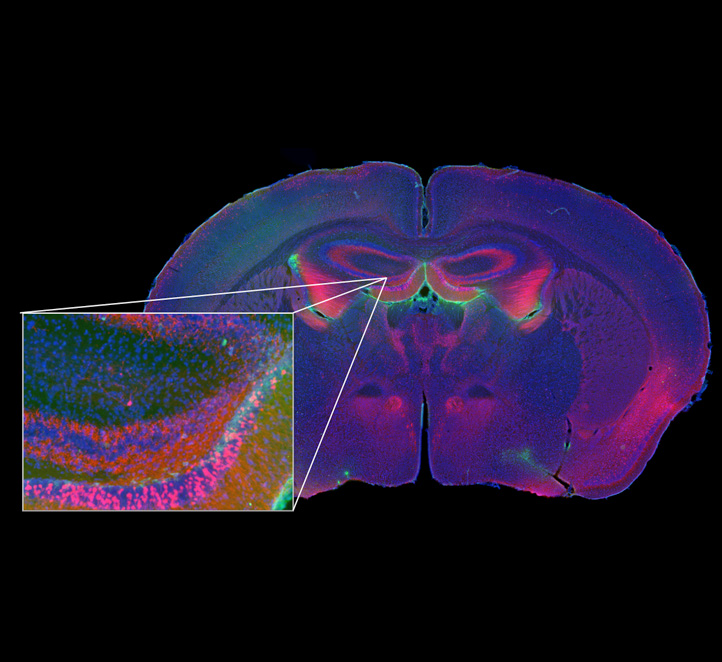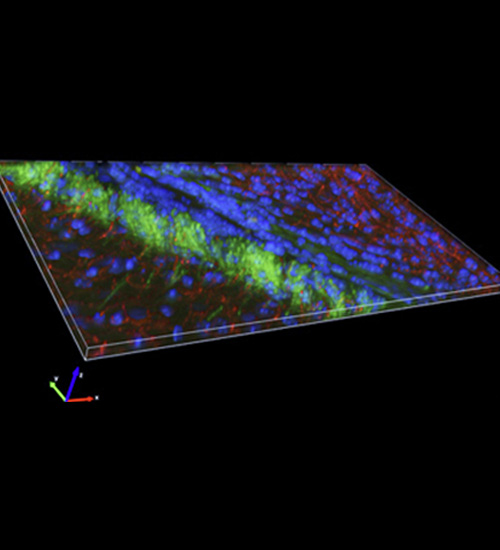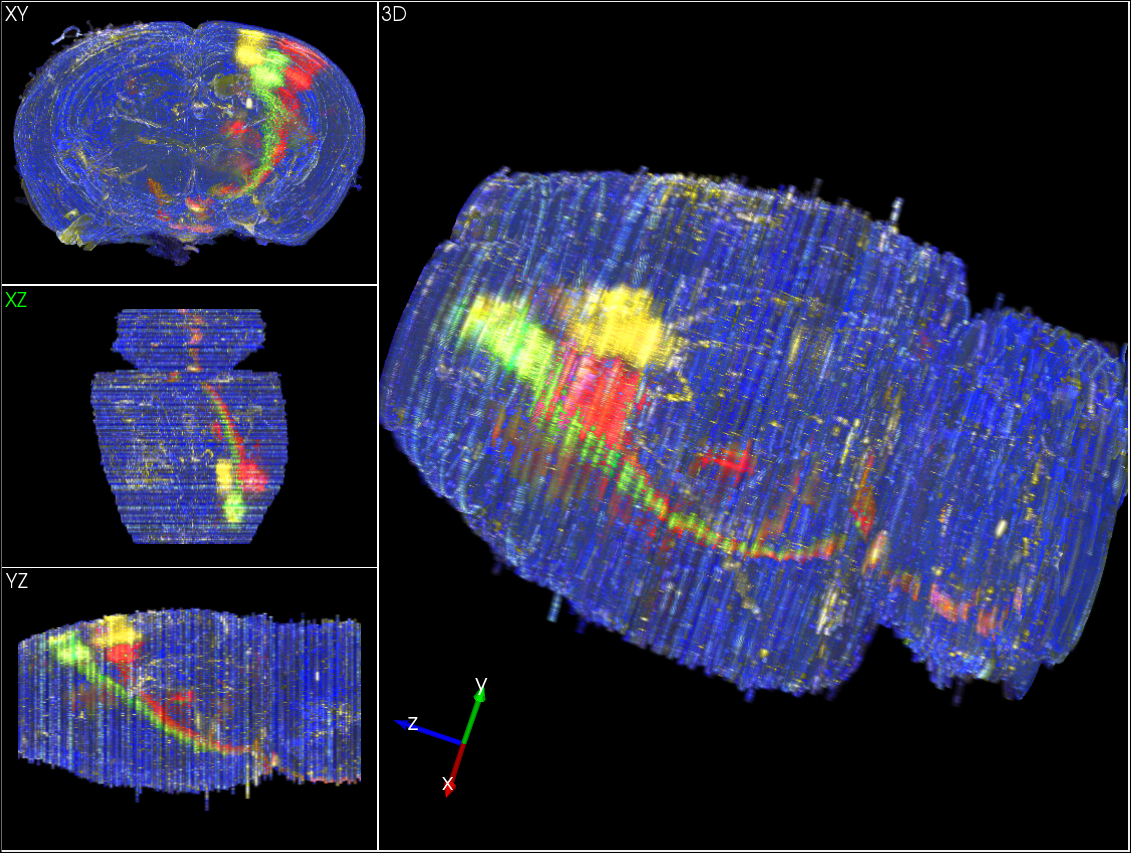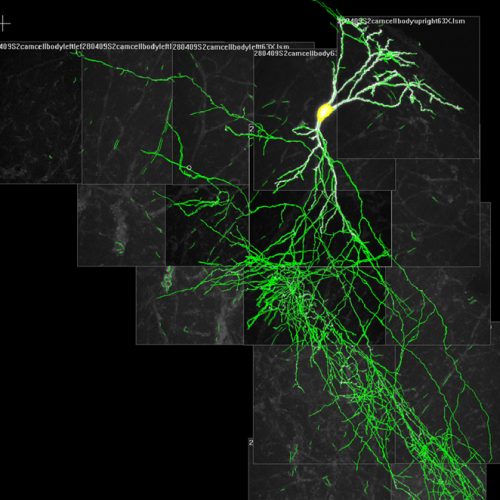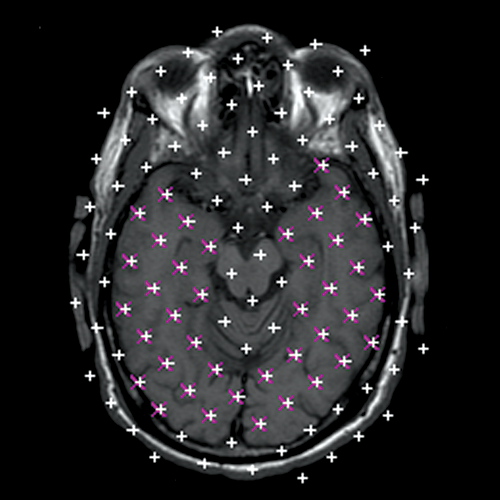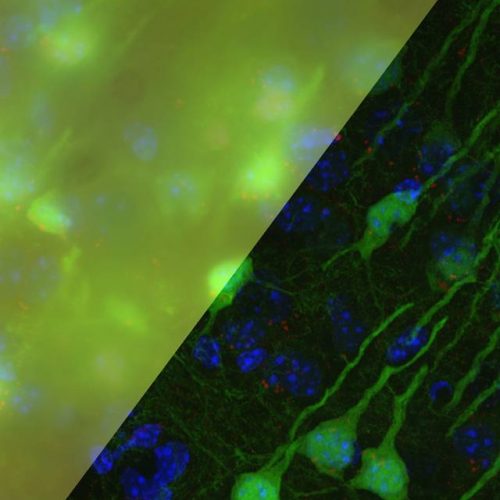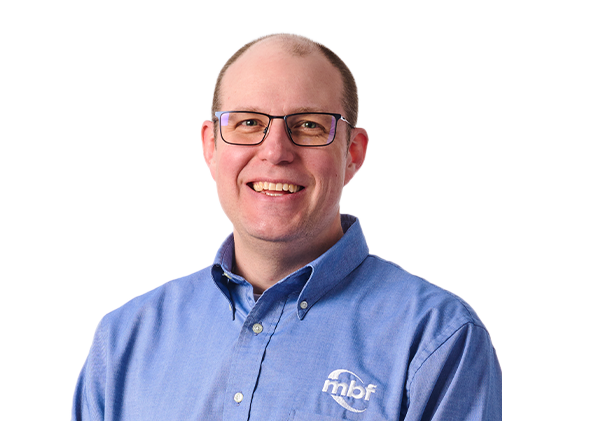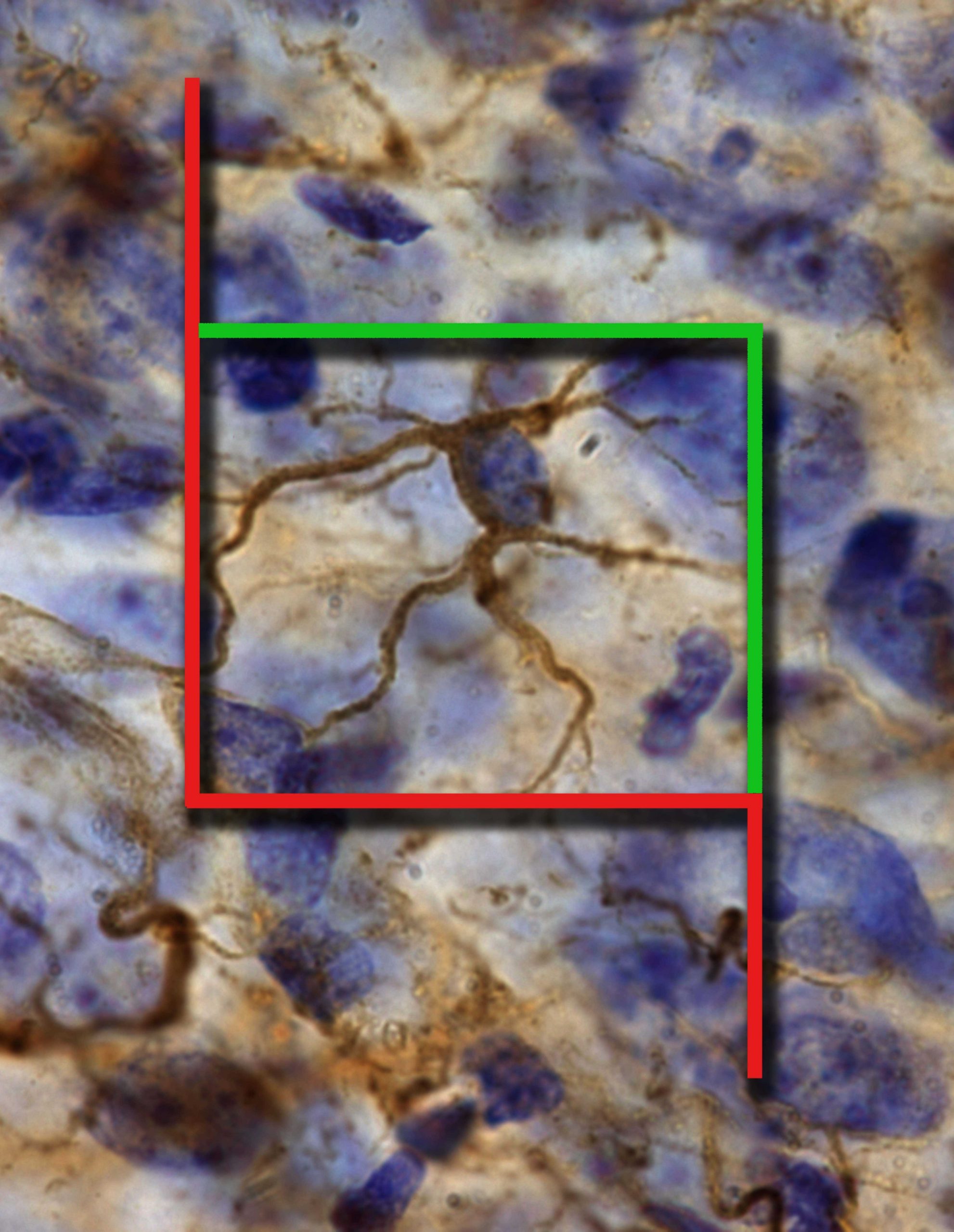
Cell Counting
Counting the number of cells in a region of interest with stereology yields reliable quantitative data, which can be used to determine if the number of cells differs between experimental and control groups. The Optical Fractionator probe is the stereological tool used to count the number of cells.
Systematic random sampling (SRS) is used in the Optical Fractionator method to obtain a statistically valid sample of the region of interest. The disector, a graphic of a cube or 3D rectangle, indicates the sample sites and the area where you are to count cells. A disector in 2D is called a counting frame, and it is where you mark cell tops or the top of the nucleus for quantification.
When quantifying cells, counting a unique point on a cell is recommended. The top of a cell, top of a nucleus, or a nucleolus — if there is only one nucleolus in the cell – are commonly used for counting. Whichever cell feature is chosen, it is important that it is a point that comes into focus in the z-axis then goes out of focus to unambiguously identify the point.
Results with the optical fractionator are unbiased due to systematic random sampling of the specimen and the specific rules for counting cells within a counting frame.




